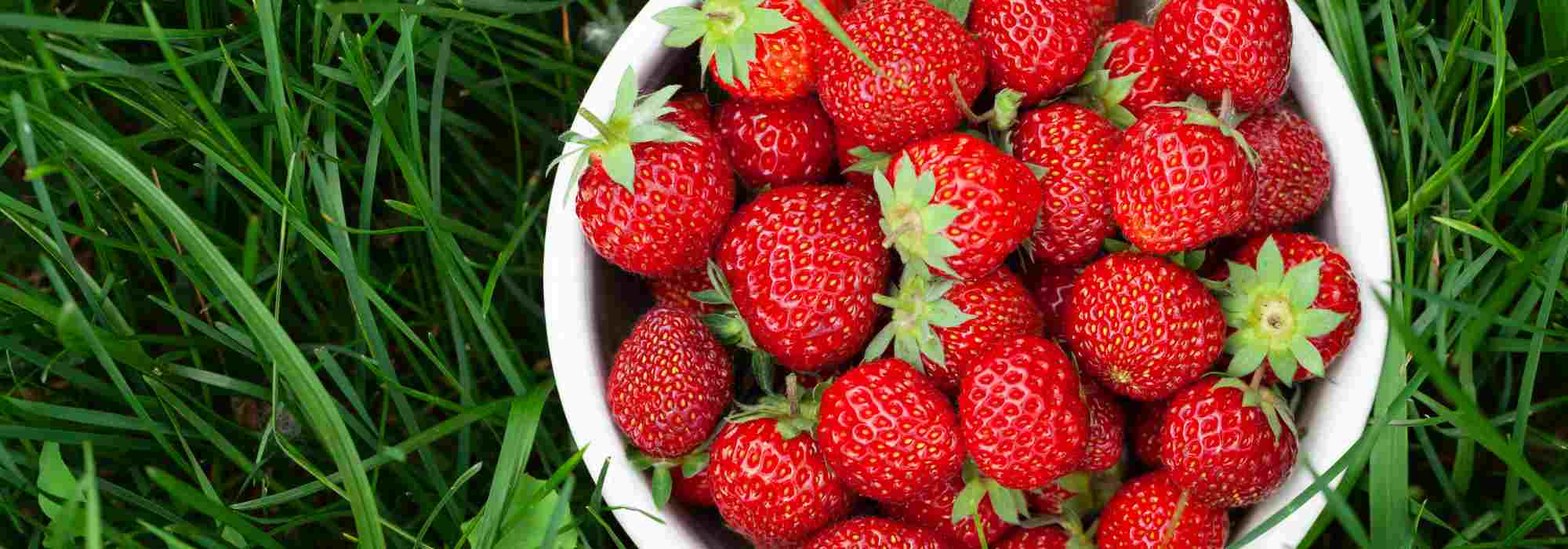
How to fertilise strawberry plants naturally?
The Secrets to Successful Fertilisation
Contents
Ah, strawberries! These little red wonders melt our papillae (and our tarts) as early as May for the earliest varieties. To enjoy these delights and achieve a harvest worthy of the name, you first need to pamper them. And to give your strawberries a helping hand to fill your basket each year and throughout the season, you just need to anticipate their needs.
Discover the best natural fertilisers and plant foods for your strawberry plants, with our advice on when and in what quantities to apply them. They’ll reward you well!
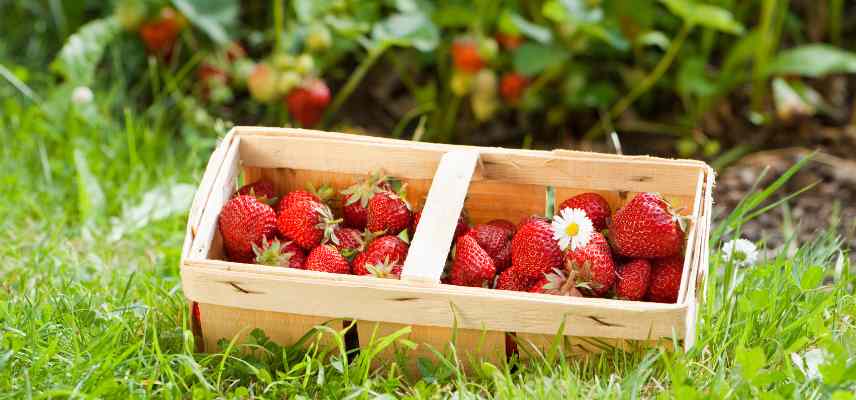
Applying organic matter such as compost, manure or plant teas
To enjoy tasty and abundant fruits, it’s essential to feed your young plants well. Natural organic fertilisers, which are environmentally friendly, are the key to achieving good yields.
Compost: The Gardener’s Black Gold
As elsewhere in the garden or vegetable patch, compost is an indispensable ally for your strawberry plants. Rich in nutrients, it improves soil structure, promoting better water retention and optimal aeration. For your strawberry plants, this means stronger roots and more vigorous growth. Moreover, compost stimulates microbial activity, creating a healthy environment that protects plants against diseases. By incorporating it regularly into your soil, you provide your strawberry plants with fertile ground, conducive to an abundant and flavoursome harvest.
N.B.: For quality compost, mix kitchen waste, dead leaves, wood chips, and grass clippings, as it should be balanced in carbon and nitrogen materials. Let it mature for a few months, and you’ll obtain a perfect natural fertiliser for your strawberry plants.
⇒ How much? Allow one wheelbarrow of compost for 2 m2 of cultivation.
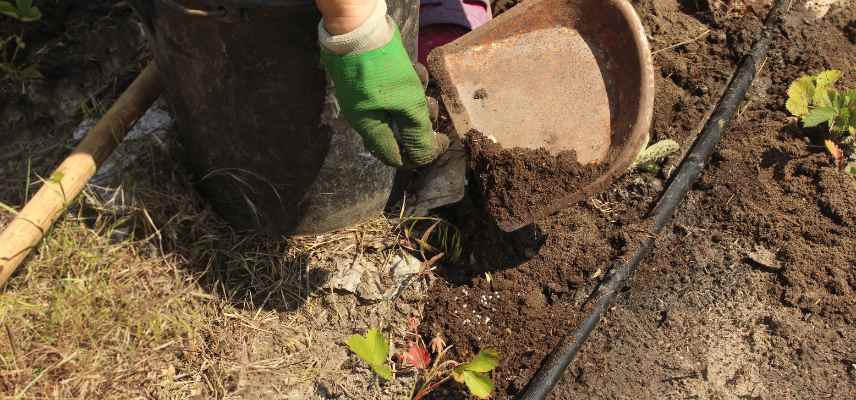
Manure: Decomposed or Dehydrated
In addition to compost prepared at the bottom of the garden, other organic materials, such as well-decomposed manure, provide a multitude of essential minerals. They stimulate the growth of strawberry plants and strengthen their resistance to diseases. Spread it lightly over the soil, then water.
There are two types of manure to know:
-
Fresh manure: rich but too aggressive for direct application. It must be composted before use to avoid burning the roots. Always use it well decomposed (at least 6 months, or even 8-10 months for poultry manure) in autumn, 1 to 2 months before planting.
-
Decomposed or dehydrated manure: more stable, ready to use, available at garden centres. It is ideal for base applications at the start of the season or in autumn. It gradually nourishes strawberry plants and improves soil texture.
Special Small Fruit Fertilisers
Very practical when you don’t have compost or manure or are growing strawberries in pots in an urban setting, they do the job well and can sometimes double production! Granular formulations are ideal for open ground, but you can also choose a liquid fertiliser, which simply needs to be applied more frequently. Spread them around the plants, lightly rake them in, and water immediately after.
Prioritise natural fertilisers for fruit trees sold commercially, and look for those richest in potash (the P in NPK should ideally be at least 10) and potassium (the K, also at 10 or 12). A balanced formula for strawberry plants would be, for example, NPK 4-8-12.
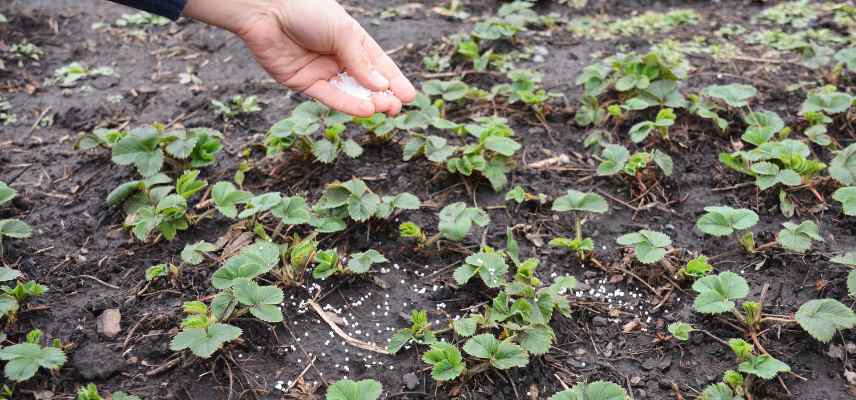
Nettle Tea
Nettle tea is a concentrate of vitamins and trace elements. Easy to prepare, simply steep nettles in water for a few weeks. Used only for watering, diluted in water (1 litre of nettle tea to 10 litres of water), it stimulates the growth of strawberry plants and protects them from parasitic attacks.
→ Also read: How to Make Compost Easily; Crushed Horn, Dried Blood, Guano… What Are These Fertilisers Used for in the Garden and Vegetable Patch?; How to Make Nettle Tea?
Read also
How to renew your strawberry patch?Getting the timing right according to the strawberry type
The ideal is always to fertilise in autumn, by applying fertiliser and hoeing between the ranks to help it penetrate well. This applies to all varieties of strawberries, whether for a first planting or for established strawberry plants.
It’s important to enrich the soil well in advance of planting (in August), during digging, by adding compost or well-rotted manure as mentioned earlier. Work them shallowly into the soil between the strawberry plants by raking. They will act as a slow-release fertiliser, much like crushed horn when planting a bush or tree. You’ll plant your strawberries a month later, between September and October. So, it’s right at the start of autumn, when preparing your strawberry patch or tidying the area for the next season, that fertilising should be done.
Once your strawberry plants are in place, they still need pampering. But it’s important to distinguish between non-perpetual and perpetual strawberry plants (which produce continuously until September):
For perpetual strawberry plants
They logically need more support to sustain their flowering and fruiting over several months. In February or March, fertilise again by adding a good layer of homemade compost around the young plants. If you don’t have compost, use a commercial organic fertiliser, typically dosing at 500 g/m² (but follow the packet instructions). Then repeat every six weeks or so from the second flowering until September, or at least a second time in mid-summer, around July, with a granular fertiliser for small fruits.
For non-perpetual strawberry plants
Fertilise in late summer or early autumn after the harvest.
→ Strawberries: 3 Reasons to Plant Them in Autumn; How to Plant Strawberries in a Planter? and Planting Bare-root Strawberries.
Feeding for strawberries grown in pots or containers
In containers, plants and especially strawberry plants have increased nutrient requirements, as the soil is not there to provide its nourishing role. You may choose to replace the entire planting substrate each year with a very high-quality compost, as it becomes depleted during the harvest months. This compensates for the drawback, since strawberries demand very rich soil.
It is often easier to use a liquid fertiliser during watering, though granular fertiliser also works well. Liquid fertiliser, however, will need to be reapplied more frequently, as it is leached faster than slow-release granules. Always apply liquid fertiliser in the morning or ideally on an overcast day to avoid the risk of scorching the foliage.
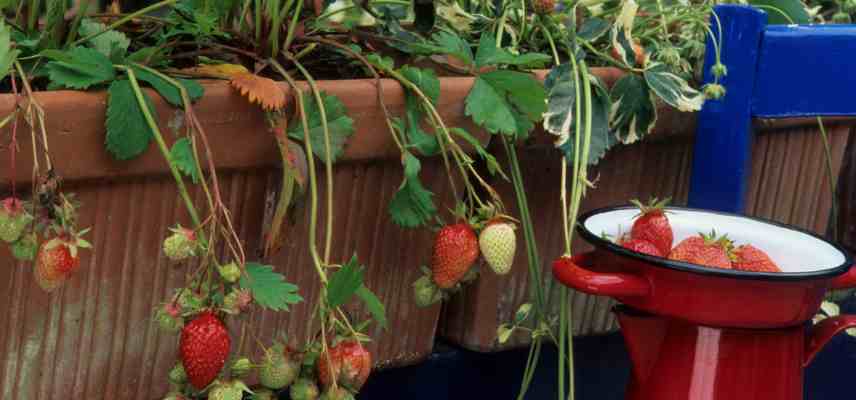
Mistakes to avoid
In trying too hard, we sometimes make a few mistakes with strawberry plants:
- Over-fertilising!… and with the wrong NPK ratios or simply the wrong dosages. You risk developing foliage at the expense of fruit if the fertiliser is too rich in nitrogen. Also, respect the fertilisation schedule to avoid deficiencies or overdosing. Fertilising too late or too early can disrupt the strawberry plants’ growth cycle. If you have little time to devote to your strawberry plants, prioritise fertilisation at the end of winter.
- For granular fertilisers bought commercially: be careful not to spread them too close to the stems, as this could do more harm than good by burning them. Place them well between the ranks of strawberry plants.
- Finally, don’t neglect watering or mulching, which are very important in summer for strawberry plants to keep the soil cool, which they need.
A well-prepared and well drained soil remains the foundation for happy strawberry plants!
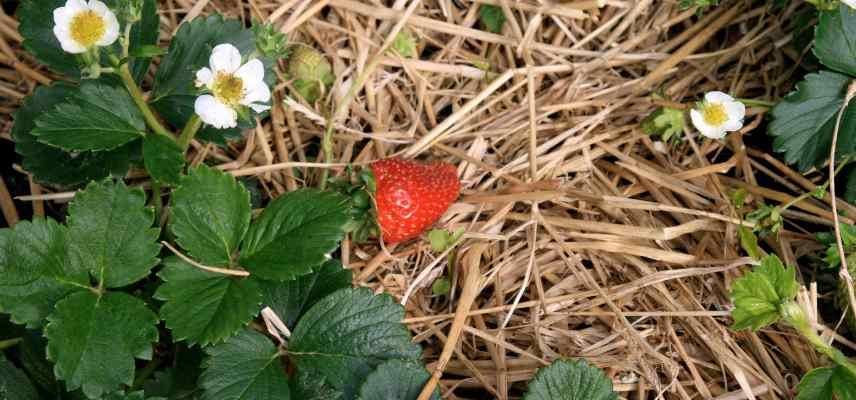
- Subscribe!
- Contents
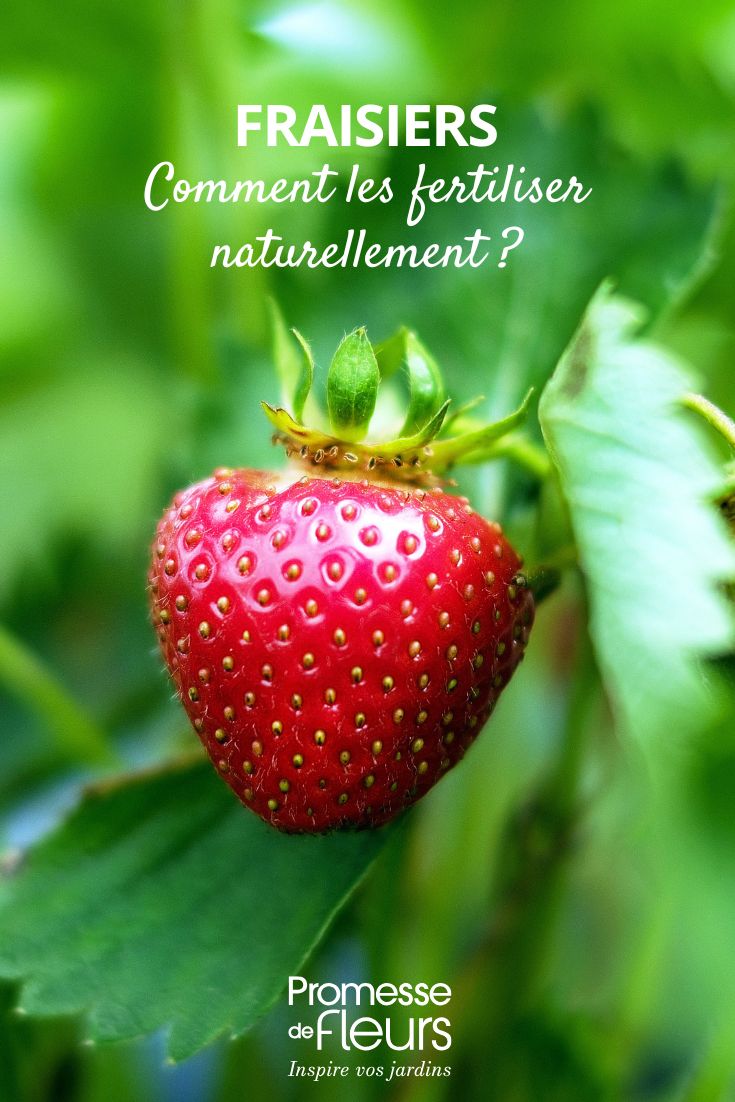































Comments